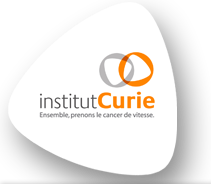$XRCC4$ in G1 suppresses homologous recombination in S/G2, in G1 checkpoint-defective cells
Résumé
Non-homologous end joining (NHEJ) and homologous recombination (HR) are two pathways that can compete or cooperate for DNA double-strand break (DSB) repair. NHEJ was previously shown to act throughout the cell cycle whereas HR is restricted to late S/G2. Paradoxically , we show here that defect in XRCC4 (NHEJ) leads to over-stimulation of HR when cells were irradiated in G1, not in G2. However, XRCC4 defect did not modify the strict cell cycle regulation for HR (i.e. in S/G2) as attested by (i) the formation of Rad51 foci in late S/G2 whatever the XRCC4 status, and (ii) the fact that neither Rad51 foci nor HR (gene conversion plus single-strand annealing) events induced by ionizing radiation were detected when cells were maintained blocked in G1. Finally, both $\gamma$-H2AX analysis and pulse field gel electrophoresis showed that following irradiation in G1, some DSBs reached S/G2 in NHEJ-defective cells. Taken together, our results show that when cells are defective in G1/S arrest, DSB produced in G1 and left unrepaired by XRCC4 can be processed by HR but in late S/G2.
Origine : Fichiers éditeurs autorisés sur une archive ouverte
